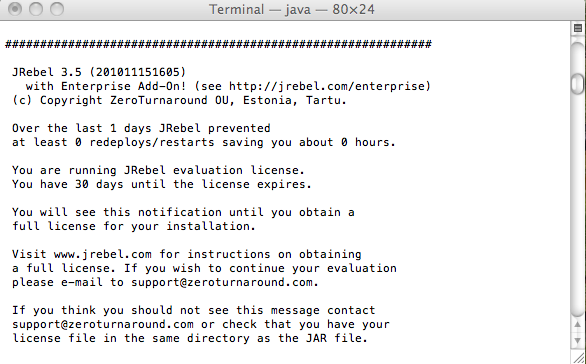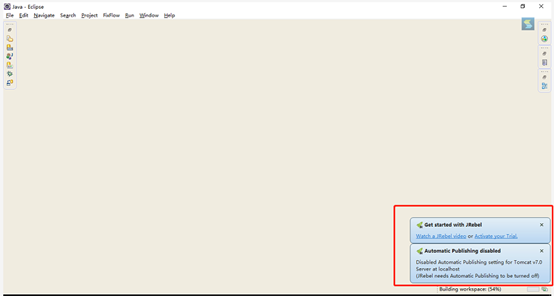

- #JREBEL CONFIGURATION ECLIPSE HOW TO#
- #JREBEL CONFIGURATION ECLIPSE FULL#
- #JREBEL CONFIGURATION ECLIPSE FOR ANDROID#
- #JREBEL CONFIGURATION ECLIPSE SOFTWARE#
See the full comparison of the two IDEA versions at the official product page:
#JREBEL CONFIGURATION ECLIPSE FOR ANDROID#
The community edition is enough for Java and even for Android development, but you will miss a lot of cool features. Community Edition is free and open source and Ultimate Edition is a commercial product and builds on top of Community Edition and offers more features and support.Ī number of features are provided only in the commercial distribution and in this guide we assume that you will try Ultimate Edition when evaluating the IDE. Now we have both Ultimate and Community editions. What makes IDEA different is that was a commercial-only tool until 2009, when IntelliJ IDEA 9 was released. Understandably, Eclipse is an advanced tool that is completely free and open source (as is NetBeans), whereas you have to pay to get the most out of IDEA. However, neither IDEA nor third-place NetBeans compare to Eclipse, which clearly dominates the scene. Close to 1/3 of Java developers that we surveyed in 2012 use IDEA on at least some projects. Note: Answers were non-exclusive and asked developers to select IDEs in use, not single selections only).Īs you can see, I’m not alone. We are planning to survey developers again in 2014 for new stats, but most likely, things haven’t changed that drastically. Here you can see a recent breakdown of the IDE landscape (as of 2012). If the IDE matches what you actually use then it is probably the best IDE for you :) Subjectively, it made me more productive, but this kind of depends on the set of features that you, as a developer, need and want. Not to mention it understands the source code context better than others.

These days, I think it still is more consistent in terms of UX, and there are shortcuts for almost every action. Now it might be only my impression, but back then IDEA had the best refactoring capabilities. My primary IDE is IntelliJ IDEA and my teammates think of me as of an IntelliJ IDEA addict. When I joined ZeroTurnaround, my new role required me to learn all IDEs in-depth due to the fact that our flagship product, JRebel, ships as an IDE plugin for Eclipse, NetBeans, IDEA, and JDeveloper. Eventually, I dodged other IDEs and decided to become a full-time IDEA user. But by using IDEA and Eclipse almost side by side for some time I realized that IDEA supports the work I was doing much better. Well, before settling on IDEA, I had worked with Eclipse and NetBeans, even championing Eclipse at one point in my former job.

Over the last 10 years, I have always been discovering the new aspects of the IDE and I’m always waiting for the new version release with an excitement.īut why? After all, aren’t all IDEs more or less the same? (BOOO! HISSSSS!) Was there something that happened in my past to make me so dedicated to this particular IDE? The truth is that I have been a happy IntelliJ IDEA (for the sake of brevity and laziness, you’ll see IntelliJ IDEA referred to in full, as well as simply “IntelliJ” and “IDEA” as well from here on) user since 2004 - a full decade. Unless you have a darn good reason, you don’t often use more than one IDE, let alone all three of the major IDEs in the Java world: Eclipse, IntelliJ IDEA and NetBeans.
#JREBEL CONFIGURATION ECLIPSE SOFTWARE#
The choice of IDE for developers is one of the most contentious debates in the software game. My name is Anton, and I’m an IntelliJ IDEA addict.
#JREBEL CONFIGURATION ECLIPSE HOW TO#
In this article, talk about the IntelliJ IDE, why people like it, how to set up IntelliJ for your first project, and the keybindings and shortcuts that make working with this popular IDE a breeze. Eclipse (or NetBeans)? Believe it or not, software developers argue as much about their IDE as any of these other hotly-debated topics.


 0 kommentar(er)
0 kommentar(er)
